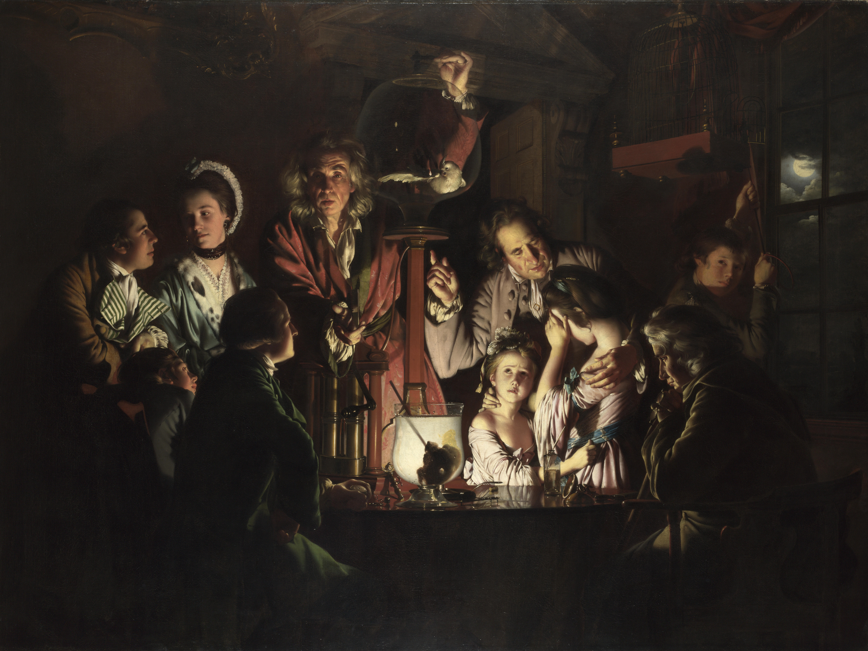Chiaroscuro, from the Italian words "chiaro" (light) and "scuro" (dark), is a powerful artistic technique that plays with light and shadow to create depth, emotion, and drama.
Chiaroscuro is the art of light and shadow, from classical masterpieces by Leonardo and Caravaggio, Romantic works by Goya, to modern uses in art and film.
This timeless method has not only shaped classical masterpieces but also continues to inspire modern art, photography, and film. Let’s explore its history, notable examples, and contemporary applications.
Explore our curated selection of contemporary artists from around the globe.
Naturalist Gallery offers artist representation internationally. Apply your art.
What is Chiaroscuro?
Chiaroscuro is a technique in visual art that employs the use of strong contrasts between light and dark to create the illusion of three-dimensionality on a flat surface. The word originates from the Italian terms "chiaro" (meaning clear or light) and "scuro" (meaning obscure or dark). This interplay of light and shadow has been a fundamental tool for artists to evoke depth, drama, and mood in their work.
Historically, chiaroscuro was first used to describe a method of drawing on colored paper, where the artist worked from a base tone, adding highlights with white and shadows with dark ink or paint. Over time, the term expanded to encompass the broader use of light and shadow in painting, sculpture, and other art forms.
Notable Examples of Chiaroscuro Throughout Art History
-
Leonardo da Vinci – The Virgin of the Rocks (Renaissance, c. 1483-1486)
-
Early use of chiaroscuro to model figures and create a soft, three-dimensional effect. The interplay of light and shadow adds a mystical quality to the scene.
-
-
Caravaggio – The Calling of St. Matthew (Baroque, c. 1599-1600)
-
Exemplifies tenebrism, with intense contrasts directing focus and imbuing the narrative with divine significance.
-
-
Rembrandt – The Night Watch (Dutch Golden Age, 1642)
-
A dynamic use of light to highlight central figures and create depth, motion, and drama in a large-scale group portrait.
-
-
Francisco de Goya – Saturn Devouring His Son (Romanticism, c. 1819-1823)
-
A visceral example of chiaroscuro, where deep shadows heighten the horror and drama of the mythological scene.
-
-
Joseph Wright of Derby – An Experiment on a Bird in the Air Pump (Enlightenment, 1768)
-
Captures the dramatic illumination of a scientific experiment, emphasizing the emotional reactions of the figures.
-
-
Edward Hopper – Nighthawks (Modernism, 1942)
-
Uses chiaroscuro to evoke isolation and introspection, with stark contrasts between the glowing diner interior and the dark, empty street outside.
-
-
Cindy Sherman – Untitled Film Stills (Postmodernism, 1977-1980)
-
In her black-and-white photography series, Sherman employs chiaroscuro to emulate the dramatic lighting of classic film noir.
-
-
Gregory Crewdson – Beneath the Roses (Contemporary, 2003-2008)
-
His cinematic photographs use chiaroscuro to create mysterious, haunting narratives in suburban settings.
-
Contemporary Uses of Chiaroscuro
Chiaroscuro’s legacy extends far beyond classical art, influencing modern practices in various creative fields:
1. Photography
Modern photographers use chiaroscuro to add depth and mood to their images. In black-and-white photography, light sources are carefully manipulated to highlight subjects against dark backgrounds, creating striking compositions. Contemporary photographers like Gregory Crewdson employ chiaroscuro to evoke cinematic drama and mystery.
2. Film and Cinematography
In filmmaking, chiaroscuro remains a staple for creating atmosphere. Directors such as Alfred Hitchcock and Ridley Scott often use sharp contrasts to heighten suspense and emotion. A famous example is the use of shadow in Blade Runner, where chiaroscuro enhances the futuristic noir aesthetic.
3. Digital Art
Digital artists adopt chiaroscuro to craft realistic lighting effects in illustrations, video games, and animations. Tools like Photoshop and Blender allow artists to replicate the nuanced transitions of light and shadow seen in classical paintings.
4. Installations and Immersive Art
Chiaroscuro has also inspired interactive light installations. Artists like Olafur Eliasson use controlled lighting to create immersive spaces that explore the psychological effects of light and shadow on viewers.
Chiaroscuro’s power lies in its ability to transcend time and mediums, enriching art with depth, emotion, and narrative clarity. From da Vinci’s subtle transitions to Caravaggio’s dramatic tenebrism, this technique has shaped classical masterpieces and continues to inspire contemporary artists across photography, film, and digital art. By mastering the interplay of light and dark, artists remind us of the profound connection between visual contrasts and human perception.
Learn more About Naturalist Gallery of Contemporary Art.
You may also find the following articles helpful:
How Globalization is Changing the Art World
Eco-Art Installations That You Can Visit Right Now
How Social Media Has Created a New Breed of Art Critic
Why Do Activists Target Art? Examining Climate Protest Tactics
The Impact of War on Art: How Conflict Shapes Creativity and Culture
Rebel Artists: How Art Movements Have Challenged Political Regimes
The Ethics of the Museum: Who Decides What Gets Displayed?










1 comment
Excelent article. Thanks.